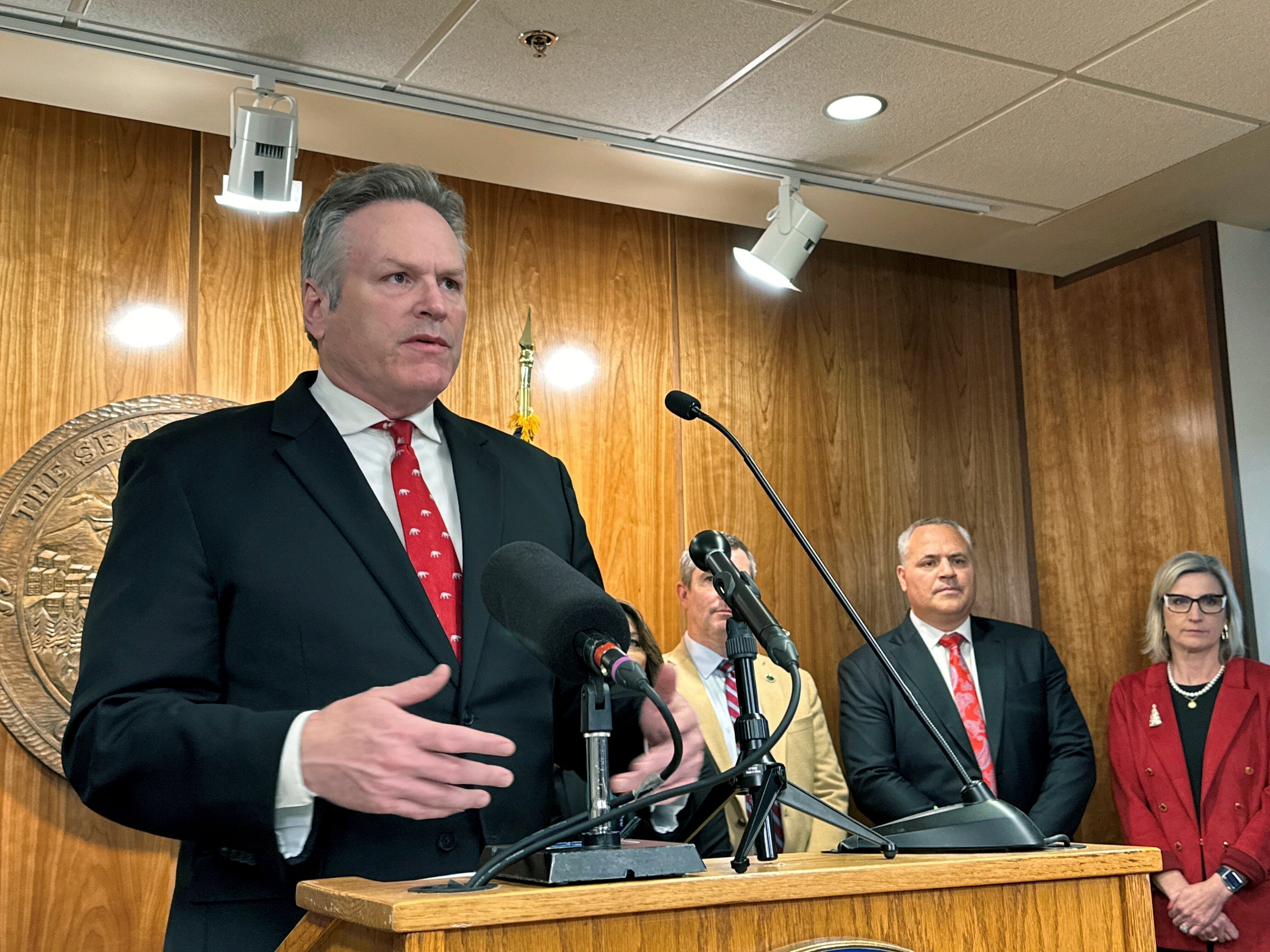Alaska governor's budget plan includes roughly $3,400 checks for residents and deficit of nearly $1B
Alaska Republican Gov. Mike Dunleavy has unveiled a budget plan that would pay residents an oil-wealth dividend of about $3,400 next year and use savings to plug an estimated $990 million deficit

Your support helps us to tell the story
From reproductive rights to climate change to Big Tech, The Independent is on the ground when the story is developing. Whether it's investigating the financials of Elon Musk's pro-Trump PAC or producing our latest documentary, 'The A Word', which shines a light on the American women fighting for reproductive rights, we know how important it is to parse out the facts from the messaging.
At such a critical moment in US history, we need reporters on the ground. Your donation allows us to keep sending journalists to speak to both sides of the story.
The Independent is trusted by Americans across the entire political spectrum. And unlike many other quality news outlets, we choose not to lock Americans out of our reporting and analysis with paywalls. We believe quality journalism should be available to everyone, paid for by those who can afford it.
Your support makes all the difference.Alaska Republican Gov. Mike Dunleavy unveiled a budget plan Thursday that would pay residents an oil-wealth dividend of about $3,400 next year using a formula that lawmakers have all but abandoned and use savings to plug an estimated $990 million deficit.
The proposal does not include an increase in the per-student K-12 school funding formula, though Dunleavy, a former educator, said he expected education to be at the fore of discussions when lawmakers convene for their new legislative session next month. He said he wanted lawmakers to consider his proposal from last session that would provide bonuses to teachers as a way to help recruit and retain them.
Dunleavy blasted the federal government and groups that have challenged oil, mining and other development projects in Alaska, saying it has left the state with choices such as having to make budget cuts, tax residents and businesses, or reduce the size of the yearly dividend. Alaska has no state sales tax or personal income tax, and for years, without resolution, lawmakers have talked about the need for a fiscal plan that moves away from the boom-bust cycles of budgeting tied to the state's reliance on a volatile commodity: Oil.
Central to a fiscal plan is how much the yearly dividend should be. For years, until 2015, the dividend was paid according to a formula that many lawmakers have since come to view as unsustainable and unaffordable. In 2016, amid deficits, then-Gov. Bill Walker vetoed about half the amount available for dividends, and the state Supreme Court later decided the dividend program must compete for annual funding like any other state program.
The amount has since been set by what can get enough votes to get a budget passed, with debate over the size of the check often overshadowing other issues.
This year's dividend was $1,312 and cost about $880 million, with a potential for a bonus check of up to $500 next year if oil prices exceed forecasts. Dunleavy on Thursday proposed a dividend for next year in line with the formula last used in 2015, at a cost of about $2.3 billion for checks to residents of about $3,400 each, his budget office estimated.
The toll of inflation is “taking a bite out of everybody’s pocketbook. So we’re hoping that we can keep the PFD as high as possible to help Alaskans afford groceries, afford fuel, etc.,” Dunleavy said at a news conference, referring to the Permanent Fund Dividend.
The budget proposal is a starting point. The House and Senate will each have a chance to craft their own versions of the budget, which typically get reconciled through negotiations near the end of a legislative session. The 40-member House has a Republican-led majority. The 20-member Senate is controlled by a bipartisan majority.
Senate Finance Committee Co-chair Bert Stedman, a Sitka Republican, in a statement said a focus “will continue to be a balanced budget without having to dip into our significantly low reserves. It’s our job to allocate resources wisely while addressing the needs of our communities.”
Administration officials on Thursday outlined other items in the budget plan for the fiscal year starting July 1 and as supplemental items for the current year, including funding for additional staff to process a backlog in food stamp benefits.
As part of the budget for the current year, the Legislature approved a one-time, $175 million funding boost for schools in response to pleas from local officials seeking a more permanent funding increase. School officials have said that inflation and fixed costs like heating were taking a toll on their budgets and in some cases forcing program cuts or requiring increased class sizes. But Dunleavy vetoed half that extra funding.
On Thursday, some education leaders said they were disappointed Dunleavy didn't include in his proposal an increase in the school funding formula.
Jharrett Bryantt, superintendent of the Anchorage School District, said Alaska districts “are struggling to attract and retain teachers and classroom support positions due to wages and benefits that cannot compete with those offered in the Lower 48. This directly results in lower student outcomes and larger class sizes.”
He said his district has “hundreds of open positions that it struggles to fill because of how prospective educators view current conditions of the profession in Alaska.”